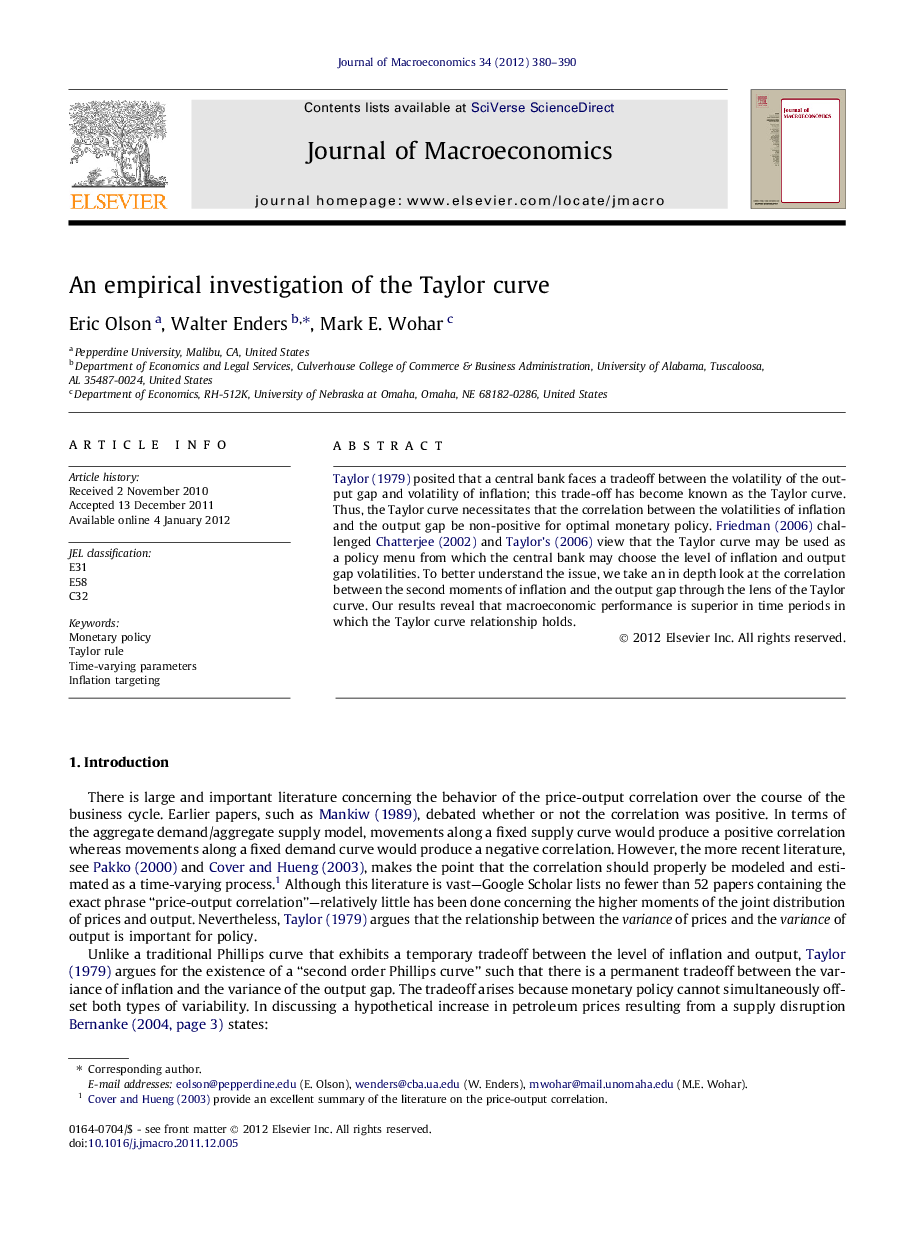| Article ID | Journal | Published Year | Pages | File Type |
|---|---|---|---|---|
| 965523 | Journal of Macroeconomics | 2012 | 11 Pages |
Abstract
Taylor (1979) posited that a central bank faces a tradeoff between the volatility of the output gap and volatility of inflation; this trade-off has become known as the Taylor curve. Thus, the Taylor curve necessitates that the correlation between the volatilities of inflation and the output gap be non-positive for optimal monetary policy. Friedman (2006) challenged Chatterjee (2002) and Taylor's (2006) view that the Taylor curve may be used as a policy menu from which the central bank may choose the level of inflation and output gap volatilities. To better understand the issue, we take an in depth look at the correlation between the second moments of inflation and the output gap through the lens of the Taylor curve. Our results reveal that macroeconomic performance is superior in time periods in which the Taylor curve relationship holds.
Related Topics
Social Sciences and Humanities
Economics, Econometrics and Finance
Economics and Econometrics
Authors
Eric Olson, Walter Enders, Mark E. Wohar,
